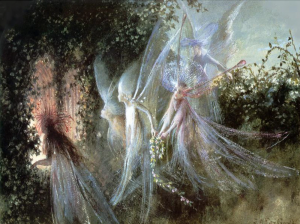1. Elves
- Habitat: Forests, woodlands, and sometimes human dwellings.
- Size: Typically human-sized or slightly smaller.
- Powers: Skilled in magic, craftsmanship, and archery; possess longevity.
- Colour: Often depicted with fair skin; attire varies, commonly earth-toned.
2. Banshees
- Habitat: Near Irish family estates or in the countryside.
- Size: Varies; can appear as a tall, gaunt woman or an old hag.
- Powers: Foretells death through wailing cries.
- Colour: Often seen in white or grey; long, flowing hair.
3. Leprechauns
- Habitat: Underground lairs or secluded areas in Ireland.
- Size: Small, around 2 to 3 feet tall.
- Powers: Shoemaking skills; can grant three wishes if captured.
- Colour: Commonly depicted wearing green attire.
4. Asrai
- Habitat: Lakes and freshwater bodies in England.
- Size: Small, delicate, often about 2 to 4 feet tall.
- Powers: Ethereal beauty; can live for centuries; dissolve into water when exposed to sunlight.
- Colour: Translucent skin with a bluish tinge.
5. Sylphs
- Habitat: Air; associated with the skies and clouds.
- Size: Varying sizes; often depicted as slender and graceful.
- Powers: Control over wind and air; can influence weather patterns.
- Colour: Often portrayed in light, airy colors like white or pale blue.
6. Pixies
- Habitat: Moors and woodlands, particularly in Cornwall and Devon.
- Size: Very small, typically 4 inches to 2 feet tall.
- Powers: Mischievous; can create illusions and lead travelers astray.
- Colour: Often depicted with green attire and pointed hats.
7. Gruagach
- Habitat: Scottish Highlands; associated with cattle and barns.
- Size: Similar to humans but can vary.
- Powers: Protects livestock; can bless or curse farmers based on their treatment.
- Colour: Often described wearing rustic clothing.
8. Nymphs
- Habitat: Natural landscapes; specific types include:
- Dryads: Forests and trees.
- Naiads: Freshwater bodies.
- Oceanids: Oceans.
- Size: Human-sized, embodying idealized beauty.
- Powers: Connected to their natural element; can influence it and protect it.
- Colour: Often depicted with features reflecting their environment (e.g., green for dryads).
9. Gnomes
- Habitat: Underground, gardens, and wooded areas.
- Size: Small, typically 1 to 2 feet tall.
- Powers: Skilled craftsmen; can move through the earth effortlessly.
- Colour: Often depicted with earthy-toned clothing and red hats.
10. Goblins
- Habitat: Caves, underground lairs, or abandoned structures.
- Size: Small, around 3 to 4 feet tall.
- Powers: Mischievous; can cause trouble; sometimes skilled in metallurgy.
- Colour: Often depicted with green or dark skin tones.
11. Sprites
- Habitat: Forests, meadows, and near water sources.
- Size: Tiny, often just a few inches tall.
- Powers: Associated with elemental magic, particularly water; can emit light.
- Colour: Often depicted with blue or green hues.
12. Fae (Fairies)
- Habitat: Varied; includes forests, meadows, and other natural settings.
- Size: Ranges from tiny to human-sized.
- Powers: Magic varies widely; includes enchantment, shape-shifting, and influencing nature.
- Colour: Diverse appearances; often depicted with ethereal beauty.
13. Will-o’-the-Wisp
- Habitat: Marshes, swamps, and bogs.
- Size: Appears as small, floating lights.
- Powers: Lures travelers off safe paths, leading them astray.
In addition to these here are some lesser known fairies.
Brownies
Small, helpful household fairies from Scottish folklore. They often assist with chores and are known to inhabit homes and gardens. Typically, they are about 1 to 2 feet tall. Brownies are usually depicted with brown or earthy-toned skin and clothing. They possess the ability to become invisible and can bring good fortune to households they favor.
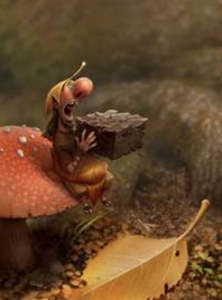
Tylwyth Teg
Welsh fairies known to inhabit groves and gardens. They are often described as human-sized or slightly smaller. Tylwyth Teg are typically depicted wearing white or green clothing. They are known for their enchanting music and dance, and they can bestow blessings or curses upon humans.
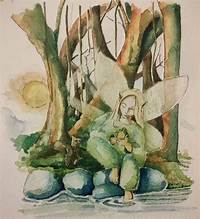
Hobgoblins
Mischievous but generally harmless fairies found in English folklore. They are known to reside in homes and gardens. Hobgoblins are usually small, around 2 to 3 feet tall. Their appearance varies, but they often have a rustic, earthy look. They can shape-shift and are known for playing pranks, but they may also assist with household tasks.
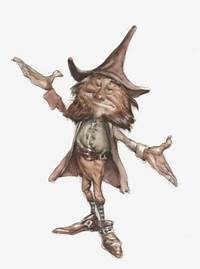
Korrigans
Breton fairies associated with natural features like springs and groves. They are small, often described as dwarf-like. Korrigans are typically depicted with fair or golden hair and red eyes. They are known for their beauty and enchanting singing, which can lure humans.
Korrigans can be very cruel to humans in their power, but are not always hostile towards them and will sometimes help around homes or farms. They are nocturnal fairies and only emerge at dusk and during the night-time.They are known to steal human children substituting them with changelings. Corrigans have beautiful hair and red flashing eyes. They are sometimes described as important princesses or druidesses who were opposed to Christianity when the Apostles came to convert Brittany. They hate priests, churches, they can predict the future, change shape, and move at lightning speed.
Like sirens and mermaids, they sing and comb their long hair, and they haunt fountains and water wells. They can make men fall in love with them, but they then kill the ones who do. On the night of 31 October (Samhain), they are said to be lurking near dolmens (a megalithic tomb with a large flat stone laid on upright ones, found chiefly in Britain and France) waiting for victims.
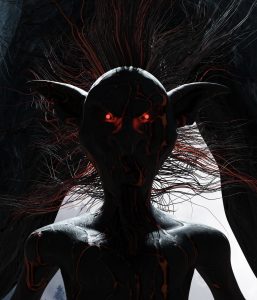
Hyter Sprites
Fairy-like beings from East Anglian folklore, known to inhabit marshy areas and gardens. They are small, child-sized creatures. Hyter Sprites are often depicted as translucent or light-colored. They are known for guiding lost travelers, especially children, back to safety.
![]()
Pillywiggins
Pillywiggins are tiny flower fairies from English folklore, particularly associated with spring and summer are known to favour the shade of large oaks. They are diminutive in size around one centimeter in height, though they can change size. often no larger than a butterfly, and are usually depicted with delicate, translucent wings and vibrant clothing that mirrors the colours of flowers. Pillywiggins make their homes among blossoms and are guardians of the flora, ensuring the health and growth of plants. They have the power to accelerate plant growth and are known to bestow blessings on gardens they favor. Pillywiggins are guardians of flowers, tending to their growth and well-being. They are peaceful creatures who generally do not interact much with humans.
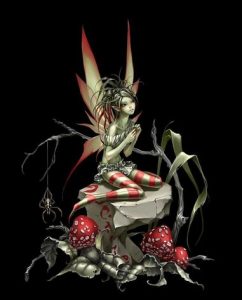
Encantados
In Brazilian folklore, Encantados are shape-shifting beings often associated with water. They are believed to originate from an underwater realm called the Encante, often associated with the Amazon River. They are believed to transform from dolphins into humans and are known for their musical talents and seductive charm. Encantados are said to emerge from the water to interact with humans, sometimes forming relationships or luring individuals back to their underwater realm. They are often depicted as fair-skinned. As dolphins, they are typically pink or gray, matching the appearance of Amazon river dolphins. In human form, they retain a mystical aura, often described as having a radiant or otherworldly complexion.
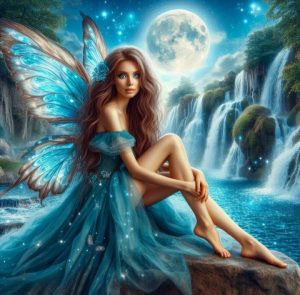
Alven
The Alven or Elven (translation: Elves) are a community of nature spirits with roots in Nordic and Germanic Mythology. Possibly related to the Aesir and Vanir, they are prominent in Gelderland, Zeeland, Drenthe and Vlaanderen, known to prank us with their illusions. Alternative names were “Alfgedrochten.” The word “Alf” is a collective noun for nature spirits, and might have been derived from the Latin word “albus”, which meant “white.” This would make sense, since Artists have often portrayed the Elves clothed in white garments. The Elf species are found in several heights. Some are tall, while others are tiny. They have been known to mate with humans, and would sometimes trade their own children for that of a human. In Flanders, Wanne Thekla is the name of their queen.
- Size: They are typically depicted as small, ethereal beings, often invisible to the human eye.
- Powers: Alven are known to control water, creating mist and dew. They are also guardians of aquatic life and plants.
- Color: They are often described as translucent or shimmering, reflecting the colors of the water and surroundings.
